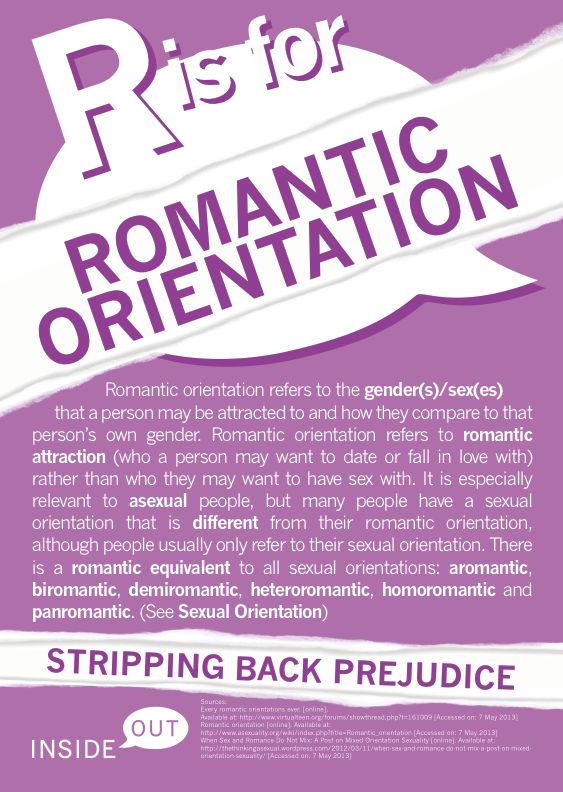While I’ve talked about pronouns, sexuality, fluidity, and genders, I never wrote a piece on romantic orientation. If you’re reading this, you probably know that sex and gender are different, but a topic that does not get much attention is romantic orientation. Romantic orientation refers to variations in emotional and sexual attraction. The term is also used by those who consider themselves asexual to describe the gender(s) to which they are romantically attracted. It is preferred by some over “sexual orientation” because it indicates that the feelings and commitments involved are not solely (or even primarily, for some people) sexual. The term stresses the affective, emotional component of attractions and relationships, regardless of orientation. It is also referred to as affectional orientation.
A lot to take in, right? Basically, romantic orientation is the identities one feels romantically attracted to, but not sexually. They are separate. Here’s a breakdown of the different romantic orientations:
Aromantic: A person who experiences little or no romantic attraction. The aromantic attribute is usually considered an innate attribute rather than a choice. Aromantic people typically get their empathetic support from platonic relationships.
Biromantic: A person who is romantically attracted to both sexes or genders. Biromantics are not necessarily sexually attracted to both/any sexes or genders.
Heteroromantic: A person who is romantically attracted to a member of the opposite sex. A heteroromantic person is not necessarily sexually attracted to the opposite sex.
Homoromantic: A person who is romantically attracted to a member of the same sex. A homoromantic person is not necessarily sexually attracted to the same sex.
Panromantic: A person whose romantic attractions are not influenced by sex or gender identity.
Polyromantic: A person who is romantically attracted to all or many genders or gender expressions.
Greyromantic: The grey area being aromantic and experiencing romantic attraction. Some people identify as being somewhere between aromantic and experiencing romantic attraction. Greyromantic identifying persons can include people who do not normally experience romantic attraction, but do experience it on occasion, but not strongly enough to want to act on it. Greyromantic individuals experience romantic attraction but only under very limited and specific circumstances.
Demiromantic: A person who does not experience a romantic attraction unless they have formed a strong emotional bond. A demiromantic person may or may not experience sexual attraction.
There is a common theme in all these definitions: sexual attraction operates independently from romantic attraction. For example, one could identify as a biromantic lesbian, often meaning they are sexually attracted to just women, but romantically attracted to both genders. There are so many different combinations and romantic orientation is just another part of one’s identity.





